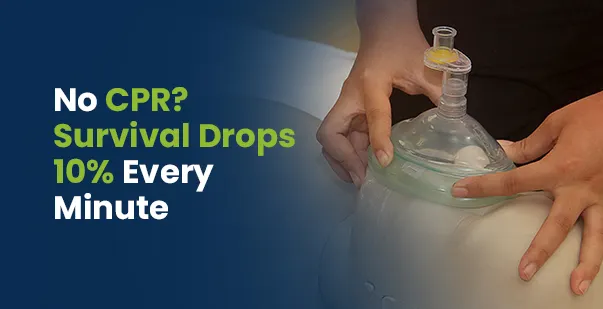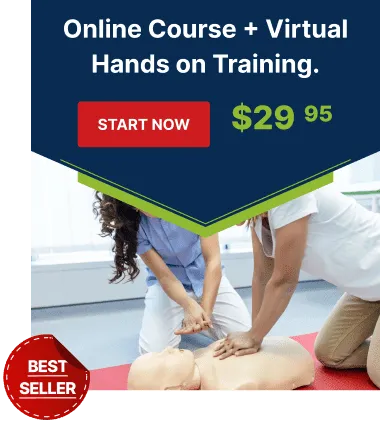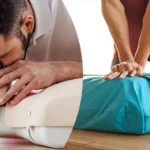Table of Contents:
- Introduction
- The Science Behind Rescuer Fatigue
- When Should Rescuers Switch Positions During CPR
- Training and Preparedness
- Rescuers Switch Positions During CPR: The Life-Saving Relay
Introduction
Want to know when should responders switch CPR positions? Cardiopulmonary resuscitation (CPR) is a must-have emergency procedure aimed at preserving blood flow and oxygenation during cardiac arrest. However, CPR can be physically demanding, and fatigue can affect compression quality. To avoid this, rescuers must switch positions at the right time to ensure the effectiveness of compression and reduce fatigue. That’s why the medical association provides clear guidelines for when should you switch positions during CPR. In this article, we’ll discuss why and when should rescuers switch positions during CPR to ensure optimal care.
The Science Behind Rescuer Fatigue
Rescuer fatigue significantly affects CPR quality in measurable ways. Studies show that physical exhaustion leads to decreased compression depth after just two minutes. Rescuers often increase their compression rate when tired and may lose proper hand positioning due to fatigue. Mental focus also diminishes over time. These factors directly impact blood flow and the patient’s survival chances. The following are the reasons why switching rescuers’ position is necessary:
Fatigue Management
Performing chest compressions can quickly lead to fatigue in rescuers, particularly in their arms and shoulders. Regularly changing positions every two minutes helps maintain optimal blood flow to vital organs.
Compression Quality
Maintaining proper hand placement and compression depth becomes challenging over time. Rotating rescuers ensure compressions are delivered with the correct technique, improving blood flow throughout the rescue process.
Recommended Timing for CPR Positions Switching
Below we are highlighting the specific guidelines for switching positions. Different scenarios require different rotation timings for both adults and children. These recommended specific intervals for changing positions ensure continuous high-quality compressions throughout the rescue effort. Below is an overview of how often should you switch rescuers while providing compressions:
| Parameter | Adult CPR (Single Rescuer) | Adult CPR (Two Rescuers) | Pediatric CPR (Single Rescuer) | Pediatric CPR (Two Rescuers) |
| Compression Depth | 2-2.4 inches (5-6 cm) | At least 2 inches (5 cm) | ||
| Compression Rate | 100-120/minute | |||
| Compression-to-Ventilation | 30:2 (30 compressions followed by 2 rescue breaths) | 30:2 | 30:2 | 15:2 (15 compressions followed by 2 rescue breaths) |
| Switch Interval | Every 2 minutes | |||
| Cycles Before Switch | 5 cycles | 5 cycles | 5 cycles | 10 cycles |
| Maximum Switch Time | 5 seconds | |||
| Role Rotation | Compressor only | Compressor/Ventilator | Compressor only | Compressor Ventilator |
When Should Rescuers Switch Positions During CPR
Switching positions during CPR is indispensable for maintaining effective compressions. Fatigue can lead to ineffective compressions, compromising patient outcomes. Knowing when should responders switch during CPR ensures that each person remains alert and capable of delivering optimal care.
Signs It May Be Time for a Switch
Rescuers should recognize physical and mental fatigue to ensure effective CPR. Early detection prevents a decline in quality, so the team should communicate openly about fatigue. Some signs that indicate when should responders switch include:
- Heavy breathing or extreme tiredness
- Soreness in arms or shoulders
- Difficulty maintaining proper hand position
- Inconsistent compression rate or depth
- Reduced mental focus or counting errors
- Shallow or incomplete compressions
If any of these signs are present, announce the need for a switch promptly.
Procedures for Switching Positions
The switch process should take less than five seconds. One rescuer announces the upcoming change clearly and firmly. The second rescuer positions themselves on the opposite side and begins compressions immediately after the last compression cycle. This maintains blood flow without significant interruption.
Verbal Cues for Switching
The current rescuer should provide verbal cues before switching. This alert signals the next rescuer to prepare for the transition. The cue should be given when the rescuer feels fatigued or near the end of their cycle. Ensure the next rescuer has enough time to get into position. Use clear and simple language to avoid confusion. Phrases like “Switching soon,” “Prepare to take over,” or “Ready to switch” help maintain effective communication.
Positioning for the Switch
Proper positioning is necessary for a seamless handover. The incoming rescuer should be ready to take over immediately after the last compression. They should pre-position themselves, whether kneeling or standing opposite the current rescuer, and hold a comfortable position to begin compressions without delay.
Seamless Handover
A seamless handover minimizes interruptions in chest compressions, which is pivotal for when performing CPR effectively. Ensure that as soon as the current rescuer finishes, the new rescuer should start compressions right away. Next, the rescuer can work on resetting the count. The new rescuer begins their count of compressions and breaths treating it as a new cycle. Besides, aim for continuity in rhythm, ensuring no noticeable breaks between cycles.
Considerations for Multiple Rescuers
In case of more than two rescuers, implementing a rotation scheme is beneficial. This helps keep each rescuer fresh and maintains high-quality compressions. Assign specific roles based on skill levels. For instance, assign tasks based on each rescuer’s strength, such as managing breaths or using an AED. Moreover, create a predefined rotation schedule for all team members. This regular position rotation scheme avoids fatigue and ensures efficient CPR delivery during an emergency. Each rescuer should know their next position to prevent confusion as well.
Advanced Scenarios Involving Equipment
When using additional equipment like an Automated External Defibrillator (AED), coordination is imperative. Rescuers need to work together to incorporate the device effectively. Know how often to switch during CPR roles around the AED without disrupting compressions. Moreover, coordinated switches during AED analysis can also reduce delays in compressions.
Read More: Implementing an AED Program in Schools
Other Special Considerations
Some situations require modified switching approaches. Environmental factors may affect timing, and multiple rescuers create additional coordination needs. The following are some additional factors related to when should you switch positions during CPR:
- Available space around the patient
- Number of trained rescuers present
- Additional equipment being used
- Environmental challenges or hazards
- Special patient circumstances
- Use of mechanical CPR devices
- Extended transport times
- Complex medical procedures during resuscitation
Training and Preparedness
Regular training enhances rescuers’ ability to switch positions efficiently. For instance, practicing in controlled environments develops rhythms and anticipation of fatigue. During CPR, ensure that you engage in drills that focus on switching. Training programs also often include exercises that simulate real-life situations. Refining techniques through repetition and feedback ensure smooth transitions. It will also help rescuers stay focused and act promptly during emergencies.
Most CPR certification programs include guidelines on switching positions. Structured training ensures rescuers understand the importance of transitions and effective communication. Stay informed about evolving resuscitation guidelines and communication strategies. Additionally, regularly refresh your skills and knowledge of best practices.
Improve Compliance with Position Switching
To enhance adherence to switching procedures, healthcare facilities can implement several strategies:
Educational Refreshers
Provide regular training sessions that emphasize the importance of switching positions during CPR. Highlight when to switch positions and how it impacts patient outcomes.
Posted Reminders
Proper timing of position switches and the quality of chest compression directly impact survival rates in cardiac patients. Use visual cues, such as timers or cue cards, to remind rescuers when to switch positions. Signs in code rooms can also serve as effective reminders.
Targeted Stimulation
Incorporate position-switching drills into team training exercises. Frequent practice builds confidence and familiarity with transitions.
Positive Reinforcement
Encourage team members to remind each other when it’s time to switch. Consider implementing an award program for excellent CPR performance, focusing on proper position switching as part of continuous quality improvement.
Optimizing Team Performance
Regular team training significantly improves switch coordination. Practice position changes during CPR simulations frequently, ensuring each switch takes no longer than five seconds. Record and review team performance to identify and implement improvement opportunities.
Read More: Chest Compressions- The First Line Response
Rescuers Switch Positions During CPR: The Life-Saving Relay
Knowing rescuers switch positions during CPR is certain for maintaining high-quality compressions. Following guidelines, such as switching every two minutes, helps minimize fatigue and optimize CPR outcomes. Recognizing fatigue signs early enables proactive position changes with minimal interruptions. Practicing clear communication and switching techniques prepares rescuers to act promptly during emergencies. In life-or-death scenarios, every second counts. Regular training and adherence to CPR protocols improve the chances of survival for cardiac arrest patients. Keep noted that teamwork saves lives! Why not take the ACLS course? It’s a great way to enhance your knowledge.







